Guest Post by Sarah Burstein, Associate Professor of Law at the University of Oklahoma College of Law (Tweet @design_law)
Microsoft v. Corel, Order Regarding Post-Trial Motions (N.D. Cal. 2018)
A district judge recently issued a decision that—if affirmed by the Federal Circuit—could have major implications for design patent law and policy.
Microsoft accused Corel of infringing five utility patents and four design patents. The four design patents all claimed designs for particular elements of the Microsoft Office graphical user interface (GUI). The images below show each of the claimed designs, along with a corresponding image of an accused product (images source: Microsoft’s complaint):
|
|
|
|
|
|
Corel initially denied infringing these design patents but, early last year, it amended its answer to admit infringement and dismiss most of its defenses, stating that, “to properly develop and prove out those defenses will simply cost more than the damages could rationally be in this case.” By the time of trial, the only remaining issues were damages, whether Corel had pre-suit notice of three of the design patents, and willfulness.
In its Rule 50 motions, Corel argued that Microsoft was not entitled to recover its “total profits” under 35 U.S.C. § 289 because Corel had not applied the patented designs to any articles of manufacture.
Section 289 provides a special disgorgement remedy for certain acts of design patent infringement. (For more on what § 289 does and doesn’t cover, see FN 74 here.) It provides that:
Whoever during the term of a patent for a design, without license of the owner, (1) applies the patented design, or any colorable imitation thereof, to any article of manufacture for the purpose of sale, or (2) sells or exposes for sale any article of manufacture to which such design or colorable imitation has been applied shall be liable to the owner to the extent of his total profit, but not less than $250, recoverable in any United States district court having jurisdiction of the parties.
Nothing in this section shall prevent, lessen, or impeach any other remedy which an owner of an infringed patent has under the provisions of this title, but he shall not twice recover the profit made from the infringement.
35 U.S.C. § 289.
Corel noted that each of Microsoft’s design patents claimed an “ornamental design for a user interface for a portion of a display screen, as shown and described…” Corel argued that the relevant article of manufacture for each of the design patents was, therefore, a display screen. Sine Corel had not sold any display screens, it argued, there were no applicable profits for Microsoft to recover.
Corel also argued that its software products did not themselves constitute “articles of manufacture.”
Microsoft argued that each of its patents claimed a design “for a user interface for a portion of a display screen” and argued that, in its stipulation of infringement, Corel had “admitted that its products include[] the claimed interface.” Microsoft also argued that software does qualify as an “article of manufacture,” relying mainly on the Supreme Court’s statement in Samsung v. Apple that “[a]n article of manufacture . . . is simply a thing made by hand or machine.” Therefore, according to Microsoft, it was entitled to recover the “total profits” from Corel’s infringing software pursuant to § 289.
The district court agreed with Microsoft. According to Judge Davila, Corel waived its “article of manufacture” arguments because it “already admitted that its products. . . infringe” the design patents. Judge Davila further decided that, even if the arguments weren’t waived, “[s]oftware is a ‘thing made by hand or machine,’ and thus can be an ‘article of manufacture,” citing Samsung. The judge further stated that Corel’s arguments about the claim language were “misplaced” because the claimed design was “broad enough that it could be ‘applie[d]’ to software.”
Both of these conclusions deserve closer attention.
The admission of infringement
As noted above, Corel admitted that its software infringed Microsoft’s design patents. According to the court, this meant that “Corel has already admitted there exists an ‘article of manufacture’ to which the patented designs . . . have been applied.” It’s not entirely clear why the court reached this conclusion. But, reading the discussion as a whole, it appears that the court may have been laboring under the (unfortunately, somewhat widespread) misapprehension that § 289 sets forth the standard for design patent infringement. In other words, it appears that the court may have been under the mistaken impression that design patent infringement occurs only when the patented design is applied to an article of manufacture.
To be fair to the court, there is some dicta floating around to that effect. But, as Microsoft argued, it is § 271 that sets forth the standard for infringement of design patents – just like it does for utility patents.
In theory, someone could infringe a design patent by, for example, inducing someone else to use a patented design without themselves applying the design to any “article of manufacture” or selling an article to which the design has been applied. One reason for this is that we don’t yet have a clear conception of what it means for a design to be “applied” to an article. This decision highlights the need for more clarity in this area. (For my own views on what “applied” should mean, see here.)
The court also seems to conflate the digital instructions for rendering a design from the actual visual design itself. In copyright law, we distinguish between the code (a literary work) and the visual design displayed by the work (an audiovisual or PGS work). That distinction might be helpful in understanding the issues in these GUI design patent cases. Effectively, Judge Davila’s ruling allows for the protection of the process used to display these designs, as opposed to the designs themselves. If upheld, this could have major implications for the protection of CAD files used in 3D printing.
Software as an “article of manufacture”
The court’s alternate conclusion—that software can be an “article of manufacture”—is both surprising and, if upheld on appeal, could have far-reaching implications.
Section 171 provides for the grant of a design patent for “any new, original and ornamental design for an article of manufacture.” There does not seem to be any good reason to interpret the phrase “article of manufacture” differently in § 289 than in § 171. (While some scholars have argued that the scope of GUI design patents should not be limited based on their verbal claims, the—admittedly scarce—case law suggests otherwise. This article collects all the relevant cases I could find as of 2015; here is another, more recent, decision.)
The question of whether a GUI design is, in fact, a “design for an article of manufacture” has never actually been decided by a court. According to the USPTO, a GUI claim “complies with the ‘article of manufacture’ requirement” if the GUI is claimed as “shown on a computer screen, monitor, other display panel, or a portion thereof.” MPEP § 1501.(a). At least in the view of the USPTO, the relevant article is the screen. Of course, this interpretation has not, however, been considered—let alone ratified—by any court. And Corel didn’t mention any of this to Judge Davila. But it’s notable how starkly the court’s reasoning in Microsoft contrasts with the USPTO’s reasoning in allowing this type of patent in the first place.
The Microsoft ruling also stands in striking contrast with Apple’s arguments in its currently-pending retrial against Samsung. Apple is arguing that the relevant article for its GUI patent is the complete Samsung phone, not the software installed thereon. It would seem odd to say that the relevant article of manufacture for a GUI is the software unless the defendant happens to sell its software bundled with a piece of hardware—especially since the Supreme Court rejected the Federal Circuit’s rule that the relevant article is whatever the defendant sells. And if it seems strange to treat Corel and Samsung differently with respect to § 289, that may suggest a deeper flaw in the reasoning the USPTO used to grant design patents for GUIs in the first place.
In any case, if the Federal Circuit affirms the decision that software can be an “article of manufacture,” that would be a major change to U.S. design patent law.
It could also have implications for utility patent law. The phrase “article of manufacture” in the design patent statutory subject matter provision has long been understood to be synonymous with the term “manufacture” in the utility patent subject matter provision. (For more on the longstanding equation of these terms, see here.) One notable exception is In re Nuijten, where the majority rather clumsily tried to distinguish a CCPA design patent case, In re Hruby, on the way to deciding that only tangible items can be “manufactures” under § 101. (Neither Corel nor Microsoft mentioned Nuijten in their “article of manufacture” briefing.)
Eventually, the Federal Circuit will need to sort all of these issues out. But this decision demonstrates how urgent the need is for clarity—and clear thinking—in this space.

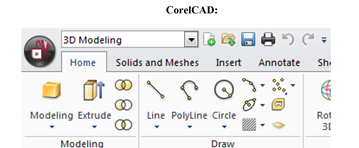
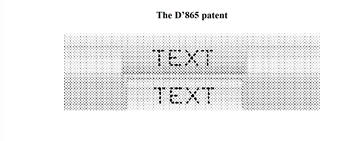
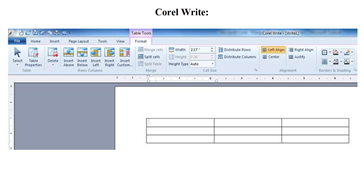
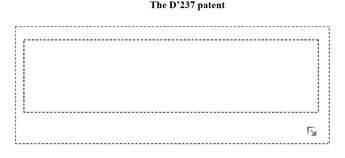
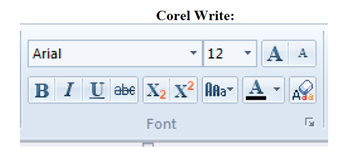

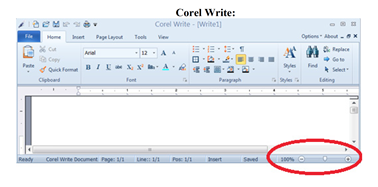
As anyone who has ever written a 100 lines of code or million lines of code knows, software it is an article of manufacture. For every programmer who works on the underlying code, there is always a front-end (GUI) designer that has an unlimited number of graphic treatments and physical arrangments which can be and are applied ON TOP of the underlying code. This is how modern software is developed and put into practice. This case is likely more important to utility patent applications which incorporate software than GUI design patents. Again, the academics like Professor Burstein who have walked aggressively against design patents are attempting to impact legal policy with little or no actual industry experience in design and especially GUI design.
As I attempted to explain below, the real issue in this [mere D.C. motion decision of no precedent authority whatsoever] is NOT whether or not software [or even the small subset of the software that can generates GUIs] is an “article of manufacture” for UTILITY patents, but whether the software itself can be “ornamental,” which is the statutory essence of design patents and irrelevant to utility patents. The ornamental features of GUIs are only visible on, and applied to, connected display screens. Infringement of design patents requires visually comparing the visual image of the design patent drawings to the visual images of the accused infringing product.
That is also distinct from the different “article of manufacture” dispute over the special, additional, DAMAGES statute unique to design patents that was recently interpreted by the Sup. Ct. to require product apportionment in the Apple v. Samsung litigation which is now back before a different CA judge for retrial.
Also, the treatment of how “functionality” of design patent elements is treated in design patents is completely different from utility patents.
It is not that your “attempted explanation” is lacking veracity, Paul – it is that there are multiple issues brought up with the concept AT issue.
And there is certainly overlap!
It is coming across that you are trying to “shush” these other LARGER picture items.
Why would you be doing this?
It certainly is not that you have a bias for protecting innovators.
Cmauro : applied ON TOP of the underlying code
How thick is the application generally? A tenth of a millimeter?
Dissembling questions won’t protect you from yourself and your own prior admissions against interests, Malcolm.
I am reminded of that with your feeble efforts here as well as the usual dissembling on the newer thread concerned with the judicial doctrine of printed matter (and of course, the important exceptions that accompany – that MUST accompany – that judicial doctrine.
A fun twist on the whole anthropomorphication theme:
link to finance.yahoo.com
Read through the article – the only reason why this puzzle exists is because of the machine created sound. No human speaker can duplicate that (combined compound) sound.
(playing with the pitch is fun too)
?
No one is picking up on the intangible item that cannot be created purely in the mind, and yet “directed to” impacts within a human mind – and that intangible item CLEARLY not being “Abstract” (no matter how that word is defined)…
What happened to the geeks out there?
Ruling that 100% of the profits from the laborious creation and sale of the article because one tiny portion of the article infringes a design patent is clearly disproportionate and not equitable.
If software be an article of manufacture, all the routines and sub-routines must likewise be articles. The software is a package- a bundle- of functionality and only the portion of the bundle infringed should be considered the article for damages. What’s the spell check worth, or the window headers, or the review flag?
Ruling that 100% of the profits from the laborious creation and sale of the article because one tiny portion of the article infringes a design patent is clearly disproportionate and not equitable.
OTOH, it’s just an aesthetic design of a nigh-infinite number of potential designs with no innate functionality, and therefore, it’s not just trivial to design around, it’s actually more effort to design a copycat than to not.
Congress included total profits in design patent infringement, rather than a reasonable royalty, because there’s no good justification for copying someone’s design: you’re jumping on their bandwagon and popularity. It’s similar to counterfeiting in that regard.
it’s just an aesthetic design of a nigh-infinite number of potential designs with no innate functionality
Grouping functionally related (virtual) objects in boxes isn’t functional?
it’s actually more effort to design a copycat than to not
Did the infringer in this case “copy” the patented designs?
Grouping functionally related (virtual) objects in boxes isn’t functional?
That may well be functional, but it has nothing to do with these patents or this thread.
Did the infringer in this case “copy” the patented designs?
Depends how you’re using “copy,” as I’m sure you know, hence the quotes. To the legal requirement for copyright infringement? Almost certainly not. But this isn’t a thread on copyright.
The larger point here Marty is that your version of “proportionality” and “equitable” is NOT what this law is about – your feelings here simply are inapposite to what is going on.
Somehow it doesn’t seem right to say that if you admit infringement that you somehow admit every underlying fact relating to the infringement.
By way of analogy, if I admit to trespassing on your land, that doesn’t mean that I admit to damaging your lawn.
Damaging the lawn would be a non-sequitur (especially as trespass is the offense – lawn damage need not be present).
Do people use their “gut instinct” to draw these GUIs? Or is “gut instinct” only used to draw mouths?
Most people don’t calculate intermediate and final morph weights when drawing a zoom slider, no.
Another good example of why the recent increase in design patenting badly needs Fed. Cir. clarifications of the law. In particular why that law is not the same as for utility patents when the same statutes apply.
“ In particular why that law is not the same as for utility patents when the same statutes apply.”
That begs the question: WHY are we trying to make design patent law follow utility patent law when obviously they are two very different animals?
We should not be so glibly accepting of what has been written (by Congress, in this regard).
So you think attorneys and courts should just “glibly” IGNORE what Congress has written?
Nice attempt at spin.
No, attorneys should do nothing “glibly” including but not limited to ignoring anything.
That though is NOT the thrust of my comment, which is to point out that it is Congress that has been “glib,” and that us attorneys should NOT be ignoring how ill-fit design patent law is when it is attempted to be crammed into a utility patent law schema.
Maybe instead of seeking to have your “feelings hurt” all the time, Paul – you take the wax out of your Fn ears and accept that people have views different than yours, attempt to understand what drives these differences and recognize that others have a better handle on the bigger picture than you.
BTW, the PTO only clarified it own prior internal debate on whether or not screen GUI’s can be design patented in the expanded-Board decision in Ex parte Strijland (Bd. Pat. App. & Int. 1992). Note that at least a broken away part of a physical display screen itself must shown in the design patent drawings under the subject GUI.
As to some comments below, if the software itself was the “article of manufacture,” how does the GUI make the software itself “ornamental?” It would still looks like just a lot of ones and zeros even if it was visible.
“As to some comments below, if the software itself was the “article of manufacture,” how”
Your question is a jumbled mess.
First and foremost: do you think that software is a manufacture as that term is used in the patent domain?
Once you have THAT answer, THEN we could dive into the mess that design patent law is.
As any impartial reader will understand, the subject under discussion is what the “article of manufacture” requirement for design patents means, and if it applies to the software itself in the case of a GUI.
And BTW, does not asserting inducement of infringement by selling or licensing GUI software which knowingly results in direct infringement by purchasers on their screen displays avoid that issue?
Any impartial reader would easily see that there are far bigger picture items being discussed beyond the immediate design issue items, Paul.
Maybe if you want to snipe at someone’s particular “design patent” issue post, you do so directly (and clearly), instead of the “post on top and in a nebulous manner” as you have done.
I think you are taking issue with Microsoft’s slight of hand arguing design for user interface (for a display) for one purpose and article of manufacture for another.
I don’t think anyone in the “comments below” relied on the combination of positions.
I for one, am embracing the decision that software is an article of manufacture.
Though, I suppose there is a fair argument that the software is a significant component of a larger article of manufacture that presents the design.
anon attorneys should NOT be ignoring how ill-fit design patent law is when it is attempted to be crammed into a utility patent law schema.
… which is why Paul was begging for the CAFC to step in and try to fix things, you insufferable w@ nker.
Of course the system would be improved if Congress stepped in and did the fixing. But that ain’t happening anytime soon.
Has Iancu begun work on a searchable database of ornamental designs along with a uniform and mandatory system for applicants to enter new searchable designs into that database? No he hasn’t. Why not?
Instead of whining, Malcolm, try reading what I actually wrote.
As to the admission of infringement, is not the judge taking that admission as an admission against interests that all elements necessary for infringement are to be taken as established?
As applies to applicants all the time, what one says on the record is binding. For example (and a bit of patent profanity), if an applicant admits to some other art as being “prior art,” then that item IS prior art (even if the facts of the matter show it not to be).
Software is not the thought of software.
(It necessarily is an article of manufacture).
Why is this even up for discussion?
But the claim is all too often for the thot. As in, the claim covers the thot in total regardless of the window dressing.
You do realize that such is not so, and that claims are to be read as would a person having ordinary skill in the art and informed by the specification, eh?
Put the glass of Kool-Aid down, 6.
“You do realize that such is not so”
Such was so in the intermediated exchange case.
But was it done so, correctly? – and in line with MY point?
“But was it done so, correctly? – and in line with MY point?”
Yes. I don’t know what your point was so I can’t answer the last part. I think your “point” is probably just false.
Absolutely not false, 6.
Software is not “magic,” nor is it the mere thought of software – someTHING must be crafted by the hand of man to make an effect.
This is merely – and purely – an objective observation that even the most jaded person MUST come to.
Only through sheer and purposeful effort of obfuscation and dissembling can this feature of reality be ignored.
“Software is not “magic,””
That’s what the textbook said. And even if not, it doesn’t matter. If a CLAIM magically gives you the whole idea, then the CLAIM most certainly is magic.
“This is merely – and purely – an objective observation that even the most jaded person MUST come to.”
Surely not, an official textbook disagrees with you.
What “textbook” are you referring to?
I cited it many years ago, can’t find a fav for it. You guys just hemmed and hawwed and cried “bs”. But it was a pretty basic intro to computer programming 101 style book. Stated clearly that software was in fact magic.
Your fantasies just don’t count, 6.
““[s]oftware is a ‘thing made by hand or machine,’ and thus can be an ‘article of manufacture,” citing Samsung”
Now do it for a claim of a utility patent.
Professor Burstein induced us all to infringe Microsoft’s patents by including images from the patents in this post.
Such is the ridiculousness of allowing ephemeral graphics shown on a display to qualify as ornamentation of the display.
ALL design patent law provides for protected images to be “separable” from the articles of manufacture to which they are applied.
Your complaint then is NOT so limited to GUI designs (whether or not you realize this may be a different matter).
Only if you ignore part of the claim language, Thresh.
The images above are not “for a user interface.” They are for illustration in an article. They’re use here are not any more an infringement of the patent than would be printing a copy of the patent.
Yikes Their use here is….
Well waddaya know …. some intellectual honesty crept in to a Court decision. Software is an article of manufacture. Next thing ya know, someone will recognized that software, when installed, is a component of a machine. The next thing ya know, a court will recognize that if you replace a machine component with a new component you have made a new machine, especially if the new component allows or causes the machine to perfrom a new function or to perform an old function differently.
Who’da thunk it.
Comments are closed.